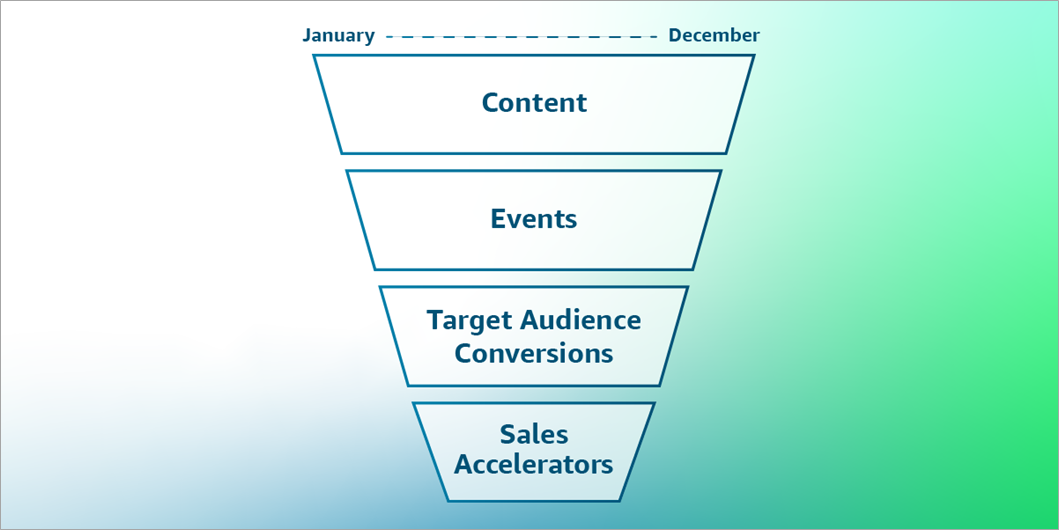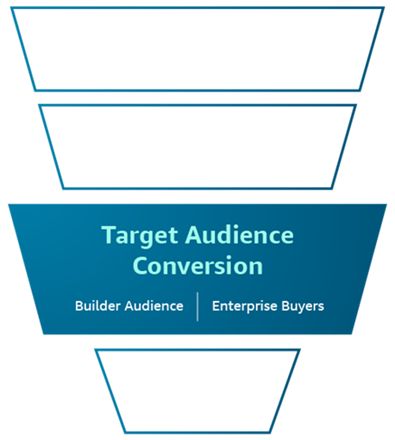AWS Partner Network (APN) Blog
How to Build a Startup Go-To-Market Motion with the AWS Global Startup Program
By Serge Shevchenko, Manager, Startup PDM Team – AWS
The AWS Global Startup Program (GSP) is an invitation-only, go-to-market program founded in 2019 for early- to mid-stage software startups that have raised funding, achieved product-market fit, and are ready to scale.
Along with a robust set of resources for accelerating startup growth, participants receive guidance from an AWS Startup Partner Development Manager (PDM), their primary point of contact, and technical support from an assigned AWS Startup Partner Solutions Architects (PSA).
The purpose of this post is to provide startups with a blueprint on how to collaborate with their AWS Partner team to plan and execute a joint go-to-market (GTM) motion with the AWS Global Startup Program.
Before Getting Started
To leverage the GTM motion described in this post, AWS Software Startup Partners must already be set up in the Software Path of the AWS Partner Network (APN) as a Validated Partner.
Participation in the AWS ISV Accelerate Program, AWS Marketplace, and APN Customer Engagements (ACE) program is critical to executing this motion. Other programs like the AWS Service Delivery Program and AWS Competency Program are supplemental.
Building the “Better Together” Story with AWS
To ensure a successful GTM motion with the AWS Global Startup Program, it’s critical for software startups to first identify their solution strengths, how they complement AWS, and what outcomes can be produced for shared customers.
Software startups can start by doing the following:
- Identify core strengths: Be brutally honest about what the solution brings to the table and where it’s lacking strength. We have identified that getting to the strengths and benefits of the core solution for shared customers is critical to a strong GTM foundation. Think about what the solution really does and how it differentiates in the market. Consider removing underutilized features and functionality from the public narrative to reduce complexity and create simplicity.
- Determine how the solution enhances AWS services: With the AWS Partner team, conduct a “technical discovery” to identify where the solution complements AWS. Collaborating with AWS to understand customer feedback about service enhancements helps guide the product team roadmap. This part of the step also helps software startups who are not sure if they have a compelling story use the feedback and identify areas of improvement. Lastly, in an attempt to work backwards from the voice of the customer, consider building a joint customer survey to help identify where the joint solution can be developed.
Throughout the process of discovery, software startups can optimize the solution with their AWS Partner team and use AWS Innovation Sandbox Credits to fund the development of the use cases.
“The AWS Partner team helped us access the AWS service team, leading us to becoming a design partner for the relevant service launches; this was priceless for us. The deep technical partnership by the AWS Partner team allowed us to not only be exposed to upcoming features but also run joint engineering collaboration to tune the features which best serve our shared customers.” ~ Erez Berkner, CEO at Lumigo
After the steps to understanding the strengths of the joint solution are complete, software startups can work with their AWS Partner team to create a joint solution and sales brief. These explain how and why the software startup’s solution and AWS are “better together.” Focus on how they both bridge gaps to address challenges for shared customers.
Finally, build the content with three critical audiences in mind—a joint AWS customer (technical/builder), AWS technical champion (technical account manager/PSA/builder), and an AWS seller (business outcomes/enterprise buyer). Although it may appear there is just one audience at this point, later on there will be requests for separate content targeted for each.
Setting the GTM Calendar
After creating internal content and messaging, start building out your joint GTM plan, which includes a data-driven editorial calendar tied to desired outputs. Start by identifying outputs such as the joint revenue goal for the year.
Based on the average total contract value and conversion rates, work backwards to determine the volume of Sales Qualified Leads (SQLs) and then Marketing Qualified Leads (MQLs). After that, break down the required volume of GTM activity and content to meet the MQL target for the next 12 months.
Although the software startup leads this work, the AWS Partner team can support and co-fund the activity along the way (based on cash and credit eligibility/availability).
Generating Leads with Content Using the Joint GTM Funnel
When populating the editorial calendar, take the entire funnel into account. Build out the funnel activity from January to December with the AWS Partner team, add due dates, assign owners, and obtain buy-in across the business from product, marketing, and sales organizations.
Figure 1 – Joint GTM funnel.
Generating Leads at the Top of the Funnel
The production of MQLs often starts at the top of the funnel and is divided into two parts. The first (“Content” – see Figure 2) uses ebooks, technical whitepapers, blog posts, case studies, webinars, and more to cast a wide net for leads. Software startups without the resources to produce this content can get help from agencies listed in AWS Partner Marketing Central; AWS preferred agency work can be co-funded with MDF cash or credits.
The AWS Startup Showcase co-marketing program is also a good way to create joint content. Its quarterly virtual events with AWS leaders, customers, and highlighted startup partners can generate quality leads.
The second part (“Events” – see Figure 2) includes engaging with prospects at AWS Summits, re:Mars, re:Inforce, re:Invent, and more. The AWS Partner team will help software startups navigate participation in these events, explaining and advising them on available packages.
Tips for success at AWS Summits and re:Invent include sponsoring or having a booth, subscribing to the sponsorship newsletter, hosting or cohosting happy hours, and conducting hands-on workshops. Be intentional about your audience and set up customer and AWS team meetings in advance.
Figure 2 – MQL generation.
Converting High-Quality Leads in the Middle of the Funnel
After capturing MQLs with content, the next step is moving to the middle of the funnel, where the focus is on high-quality leads, also known as Sales Qualified Leads (SQLs). The audience defines the content created in this stage.
There are two audiences: 1) Product-Led Growth (PLG)/builders; and 2) executives. Both require different approaches to converting them from MQLs to SQLs.
Engaging the PLG/Builder Audience
The PLG/builder audience consists of DevOps roles, site reliability engineers, developers, engineers, data scientists, and security teams. Developing a thriving community that forms the foundation for internal support is critical to successful interactions with this audience.
A good way to start is to identify and engage with AWS builders, such as Partner Solution Architects, Technical Account Managers, and Developer Advocates who currently contribute to the open-source project, support joint customer accounts, or are part of relevant technical field communities.
By inviting builders to community development platforms like Discord, Reddit, LinkedIn, and GitHub, software startups can build feedback loops for product development and solution validation. Hosting in-person community social events and leveraging AWS Startup Lofts, Offices, Summits, and re:Invent can further facilitate meetups and networking.
Figure 3 – MQL conversion.
Training and enablement also play a vital role in reaching builders. The AWS Global Startup Partner team has trained thousands of developers through AWS DevDays and hands-on workshops and can provide valuable input and assistance with training and enablement.
Creating joint workshops that address customer challenges and showcase the value of the solution on AWS is essential. Selecting the right tools for hosting engaging workshops, incorporating interactive elements like chat, Q&A, polls, and following up with attendees through post-event emails are effective strategies. Documentation, community platform links, and surveys can help foster continued engagement and feedback for future workshop modules.
“Workshops help engineers and DevOps professionals get hands-on experience using the latest AWS technologies with Pulumi. Joint workshops with the AWS Global Startup Program have been indispensable for onboarding new users and helping practitioners succeed with both with Pulumi and AWS–yielding significantly faster conversions than other channels.” ~ Isaac Harris, Head of Business Development at Pulumi
The AWS Partner team can walk software startups through all of these steps and help them choose the tools and strategies that work best for them.
Selling to an Executive Audience
When selling to the enterprise, a software startup’s audience is likely to be a CISO, VP of Engineering, CTO, and other IT leaders. For this audience, targeting specific verticals is more productive, and the AWS Global Startup Program has the experience and ability to support vertical-based campaigns because of internal categorization and filtering capabilities.
Be sure to pull in a relevant customer in the specific vertical to speak to the repeatable use case. To market, filter the vertical MQLs and create a quarterly or bimonthly vertical panel or webinar with leaders from AWS and the software partner product leadership team, making sure to rotate the verticals.
Bottom of the Funnel: Accelerating Sales
With a pipeline of SQLs, several AWS programs are available to accelerate these opportunities. This includes ACE, ISV Accelerate, and AWS Marketplace.
- Software startups can enter SQLs into ACE, where they connect securely with their AWS peers who share accounts and can co-sell together.
- The AWS ISV Accelerate Program can help accelerate sales cycles through cash incentives.
- AWS Marketplace helps accelerate the transaction time and reducing friction in the procurement process.
Figure 4 – SQL conversion.
To add another layer of support, the AWS Global Startup Program can offer dedicated GTM PDMs to support these opportunities as well as support the entire GTM motion from the top of the funnel to closed won business.
“The AWS Global Startup Program has enabled our team to effectively go-to-market with AWS. It has helped us grow our AWS attached opportunities by over 150% in the quarter since we joined the program through identifying new co-sell opportunities, aligning strategic introductions, exploring custom co-marketing opportunities, and advocating on our behalf throughout AWS.” ~ Aran Khanna, CEO at Archera
Summary
With a better understanding of how to build intentional sales plays throughout the funnel, partners in the AWS Global Startup Program can identify and tweak areas of growth and success through a joint partner plan. AWS supports software startups at every step of their GTM motion journey.
To get started, become an AWS Partner, explore content for startups, and learn more about the AWS Global Startup Program.



